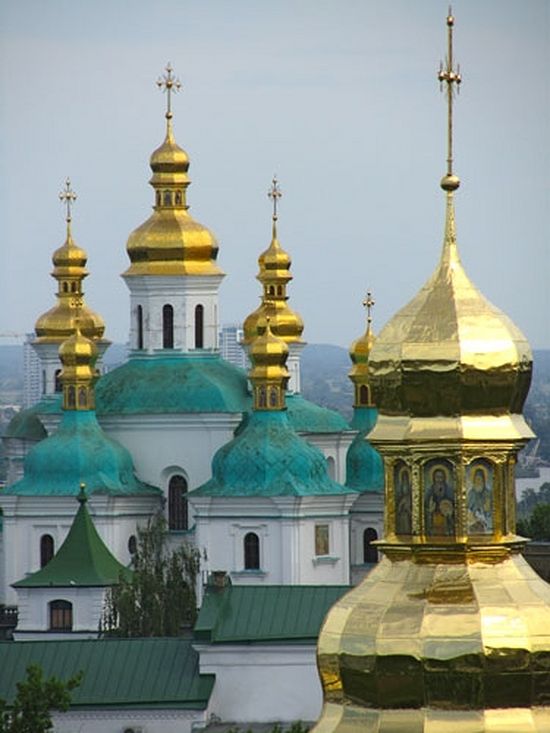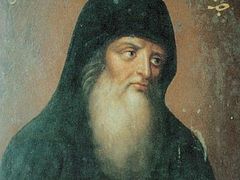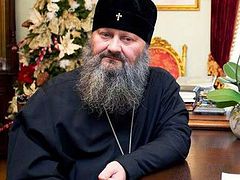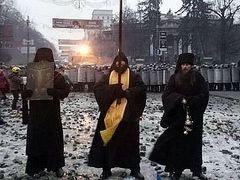The Kiev Pechersk Lavra is a major Orthodox monastery located in Kiev, Ukraine, also referred to as the Monastery of the Kiev Caves. Founded in 1051 AD, during the times of Kievan Rus' (a medieval state in Europe, from the late 9th to the mid 13th century), the monastery has remained a major center of Orthodox Christianity in the Slavic world.
The monk Anthony is credited with founding the monastery when he settled in one of the caves that are now part of the Far Caves (also called the Caves of Theodosius). This occurred most probably in the year 1051, which is the traditional date for the foundation of the Kiev-Pechersk Monastery. As the community grew to twelve monks new caves were excavated. Among those who joined Anthony in the early years were Theodosius and Barlaam. In 1057, Anthony, who desired a life of seclusion, named Barlaam as the first abbot and withdrew from the community to new cave in a hill that today is part of the Near Caves (also called the Caves of Anthony).
During the early times when Theodosius was abbot (1062-1074), a wooden structure was built over the Far Caves and the monks, whose number was reaching one hundred, moved out of the caves. As the monastery grew the need for rules that would govern the life of the community was recognized. Theodosius decided to use the rules of the Studion Monastery in Constantinople.
The Monastery of the Kiev Caves was supported generously by the princes of Kiev, who donated not only money but land and buildings as well. Also, many of the educated men of the area became monks at the monastery as it became the largest religious and cultural center of Kievan Rus'. Of these monks twenty became bishops during the twelfth and thirteenth centuries.
In the mid 1070s the center of the monastery began to move to the area of the present Upper Lavra with the building of the Dormition Cathedral. In time the Near and Far Caves became places of seclusion and burial for the monks. In 1073, Anthony became the first burial in the Near Caves, followed in 1074 with the burial of Theodosius in the Far Caves.
During the ensuing years the monastery was raided several times. Significant raids happened in 1096, 1169 and 1203. In 1240, the invading hordes of the Tatars came through Kiev, destroying the city and the monastery. During the times of Tatar occupation the monks moved into the caves, to remain there for a long time. After each raid the churches and buildings would be replaced and the system of underground caves and catacombs would be expanded. In 1470 the monastery was rebuilt again by Prince Semen Olelkovich, but was once again destroyed by Tatars in 1482.
From these times until the end of the sixteenth century little documentation remains as historical materials were destroyed during each raid. Beginning in the sixteenth century, reports by travelers provide descriptions of the caves and the monastic life then practiced at the monastery. These reports noted the length of the underground caves and also noted that liturgy was celebrated in the two underground churches every Saturday. By the late sixteenth century the monastery had once again recovered. At this time it was granted self-control status by the Patriarch of Constantinople. This freed the monastery from the control of the government of Kiev. The monastery was also granted the status of a lavra.
Following the Union of Brest-Litovsk in 1596, those who supported the union and became Greek Catholics made an effort to gain control of the lavra, but the Orthodox prevailed and retained control.
A major fire in 1718 severely damaged the monastery and the main church, library and archives were destroyed. Restoration of this damage took ten years. In 1720, Peter I’s government prohibited printing of new books and imposed censorship on all publications from the monastery. This severely limited the monastery’s cultural influence.
By this time, the lavra was large and had acquired much wealth. The heart of the monastery remained the two underground labyrinths of tunnels, cells, and catacombs, from which the name of the monastery is derived and in which monks lived and were buried. But, the extent of the lavra grew beyond that. It owned three cities, seven towns, some 200 villages and hamlets, and about 70.000 serfs. This ended in 1786 when the Russian government secularized the property and made the lavra dependent upon the state.
At the same time the government changed the organization of the monastery by abolishing its custom of electing its own council. Thereafter the Metropolitan of Kiev appointed the council. The Metropolitan also became the abbot of the monastery with his residence within the monastery’s grounds. A trend toward Russification of the monastery began in the late eighteenth century and continued in time.
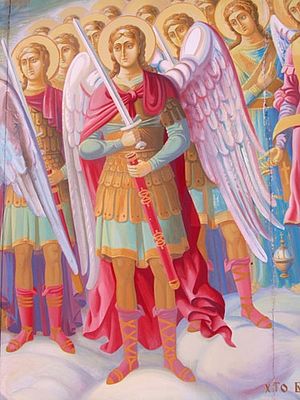 Icon of the Archangel Michael from the Lavra
Icon of the Archangel Michael from the Lavra Changes by the Soviet authorities began in 1921. Initially, the authorities confiscated the relics and historical and artistic objects that belonged to the monastery. Buildings were converted to commercial and other uses. Many of the monastery's monuments were combined into a museum, the Lavra Museum of Religious Cults and Way of Life, which also contained collections from other museums in Kiev. After closing down the monastery completely in 1926, the Soviet government first turned the grounds into a museum preserve, the All-Ukrainian Museum Quarter, that consisted of a number of museums which emphasized anti-religious propaganda, and included archives, libraries, and workshops before closing the Quarter in 1934 and transferring the collections to new museums in Kiev. The Soviet authorities removed all the bells during the period 1931 to 1932.
During World War II the Soviet army mined the Dormition Cathedral before the advancing Nazi forces. The explosives were then detonated after the Nazi forces had occupied Kiev on November 3, 1941 severely damaging the cathedral. After the war the monastery grounds were restored and renamed the Kievan Cave Historical-Cultural Preserve, which housed a number of museums and institutions. Also, a functioning monastery of about one hundred monks was allowed to operate until 1961.
As the atheistic times began to wane in the 1980s, the Soviet government transferred in 1988 the area of the Lower Lavra, with the Far Caves, to the possession of the Ukrainian Church of Russia in commemoration of the one thousandth anniversary of the Baptism of Rus'. With the return of the Lavra to the Church the monastic and spiritual life was slowly restored. During 1998 to 2000 the city of Kiev rebuilt the Dormition Cathedral and returned it to the Church. As new monks have joined elderly monks who have returned to the Lavra, the cycle of services has been re-established, building on the primary duty of the monk of never ceasing prayer.

